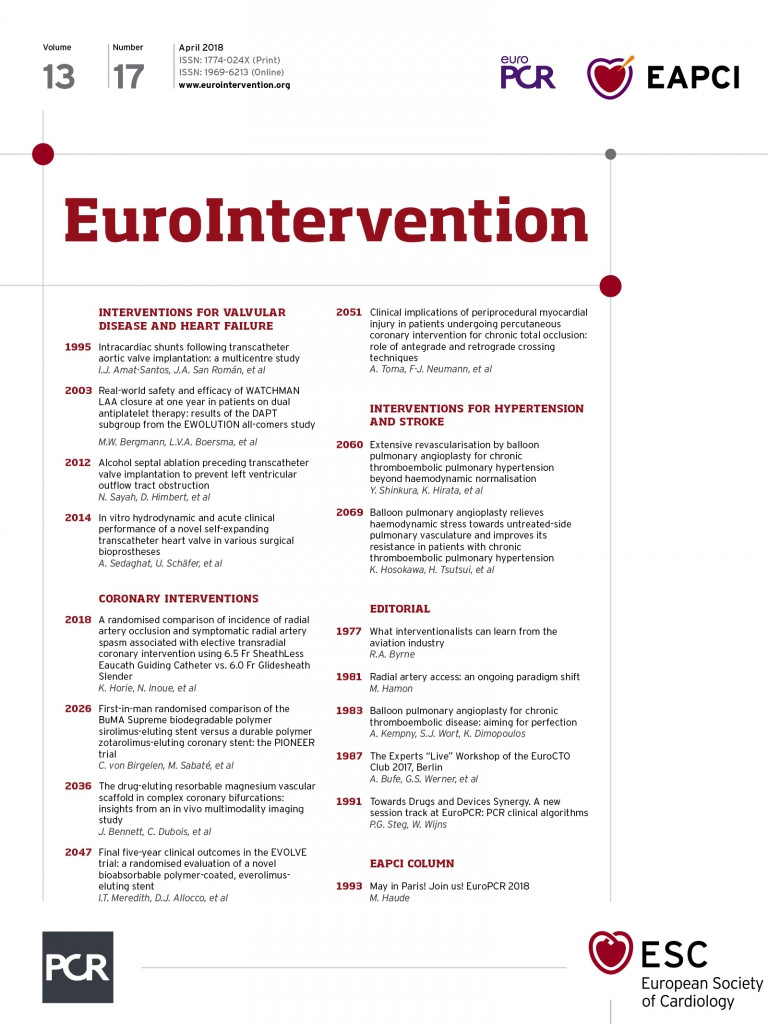
We appreciate the interest in our article1. The author (N. Saito) raised the issue of fundamental errors in the primary assumption for the mathematical model of FFR post-stenting and suggested that the application of the prediction model in Yamamoto et al2 would improve the outcomes of FFR prediction.
The flow rate (Q) in our derivation is defined as the coronary flow (not as the perfusion flow), which determines the translesional pressure gradient3. It is well established that the coronary flow is proportional to the difference between the distal pressure and the wedge pressure4. This is also the first equation for the model derivation of De Bruyne et al5, which was considered as the “conventional model” for the comparison in our publication. Because the same assumptions were made for the derivation, the prediction equations of our model are inherently equivalent to those of De Bruyne et al2. We believe our mathematical derivation is founded on the well-established knowledge of coronary physiology.
In the validation of our model, the predicted FFR values were situated within the band of true FFR±0.03 or slightly overestimated. When w=1 is used as suggested, instead of w=1.33 in our derivation, the denominator in the equation becomes larger and the predicted FFR values are further overestimated.
Conflict of interest statement
The authors have no conflicts of interest to declare.
Supplementary data
Both of the letters to the Editor disputing the paper, “Invivo validation of mathematically derived fractional flow reserve for assessing haemodynamics of coronary tandem lesions”1, together with all further correspondence can be found online in the Supplementary data.
To read the full content of this article, please download the PDF.

